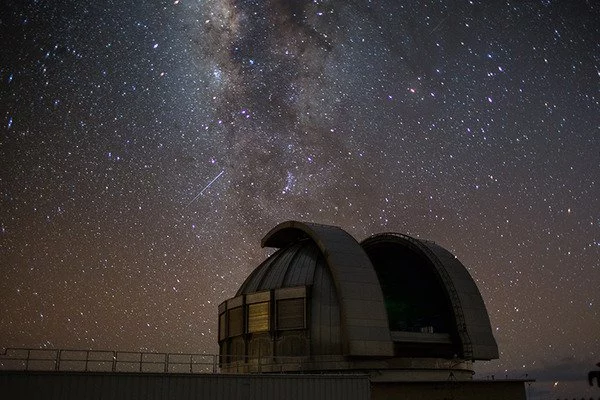The first network of robotic telescopes with stations on five continents, the BOOTES Network (Burst Observer and Optical Transient Exploring System), has been deployed by the Institute of Astrophysics of Andaluca (IAA) of the State Agency Spanish Research Council (CSIC). It is the most comprehensive network of its kind, a one-of-a-kind, a fully automated resource for combining data from instruments around the world, monitoring the sky, and assisting observations from missions and satellites, with installations in Spain (two stations), New Zealand, China, Mexico, South Africa, and Chile. The journal Frontiers in Astronomy and Space Sciences has accepted a manuscript that describes the network’s accomplishments in detail.
“Since we established the first station in 1998 at INTA (Arenosillo, Huelva), the organization that initially backed the idea, BOOTES has been the product of over 25 years of nonstop work. Being the first robotic network with a presence on every continent, the full deployment represents a scientific milestone “according to Alberto J. Castro-Tirado, a scientist at IAA-CSIC who has been the project’s primary investigator from the start. This project is in front of the American one, which is currently building a station in Asia, and the Russian one, which lacks an installation in Oceania.

The University of Malaga plays a significant role in the management of the BOOTES network, which is overseen by the IAA-CSIC in cooperation with other Spanish and foreign institutions. Its major goal is to quickly and autonomously examine what are known as transient sources, which are astrophysical objects that emit light abruptly, powerfully, and suddenly rather than exhibiting a long-lasting emission over time. Typically, satellites are used to detect these events, and BOOTES offers an automatic response in real time that enables their characterization.
The network will aid in the study of gamma-ray bursts, the universe’s most energetic phenomena that are linked to the demise of big stars. It is typically discovered by satellites, which alert the scientific community to the outbreak so that the incident can be thoroughly investigated. A network of very quick-pointing robotic telescopes, like BOOTES, is a great complement to satellite detection. In fact, BOOTES will also be used to track and monitor gravitational wave emitters and neutrino sources, as well as comets, asteroids, variable stars, and supernovae. But it will also maintain a watchful eye on the skies, detecting both space junk and potentially hazardous items that might endanger our world.
High-impact science with BOOTES: In recent years, narrowing gamma-ray burst models has been made possible by fast-tracking observations of gamma-ray bursts made with BOOTES, from the initial few seconds through the last phases. For instance, one of the BOOTES network’s observatories was the sole Spanish site to observe the GW170817 event in 2017, the first-ever observation of a gravitational wave electromagnetic counterpart. The event that caused this emission, the merging of two neutron stars, made it possible to study light and gravitational waves simultaneously for the first time, ushering in a new phase in astronomical investigations.
In three studies published in Nature in 2020, BOOTES helped identify a source in our own galaxy, the Milky Way, that produces very brief radio bursts and proposed that the source might be a magnetar, a neutron star with a strong magnetic field.
In 2021, BOOTES also made a contribution to the study of various pulses in the giant magnetic flare of a neutron star that was published in Nature. In just a tenth of a second, a magnetar released energy comparable to that produced by the sun in a hundred thousand years, and its in-depth analysis revealed multiple pulses at the peak of the eruption, which shed light on these still-unknown giant magnetic flares.
“The network’s completion is a success because it was made possible with a human staff and a significantly smaller expenditure than comparable undertakings. It is incredibly effective at finding transient sources because it has four stations in the northern hemisphere and three in the southern hemisphere, ensuring that there is always at least one telescope covering the northern and southern skies.
Additionally, Castro-Tirado adds, “since all the stations are already up and running, we can coordinate them as a single observatory that spans the entire planet, the potential of which we will show to the international community at the robotic astrophysics congress, which we hold every two years and will be held in October in Malaga (IAA-CSIC). The project was an idea I had when I was writing my doctoral thesis in Denmark thirty years ago, and for me, it has come true.
















